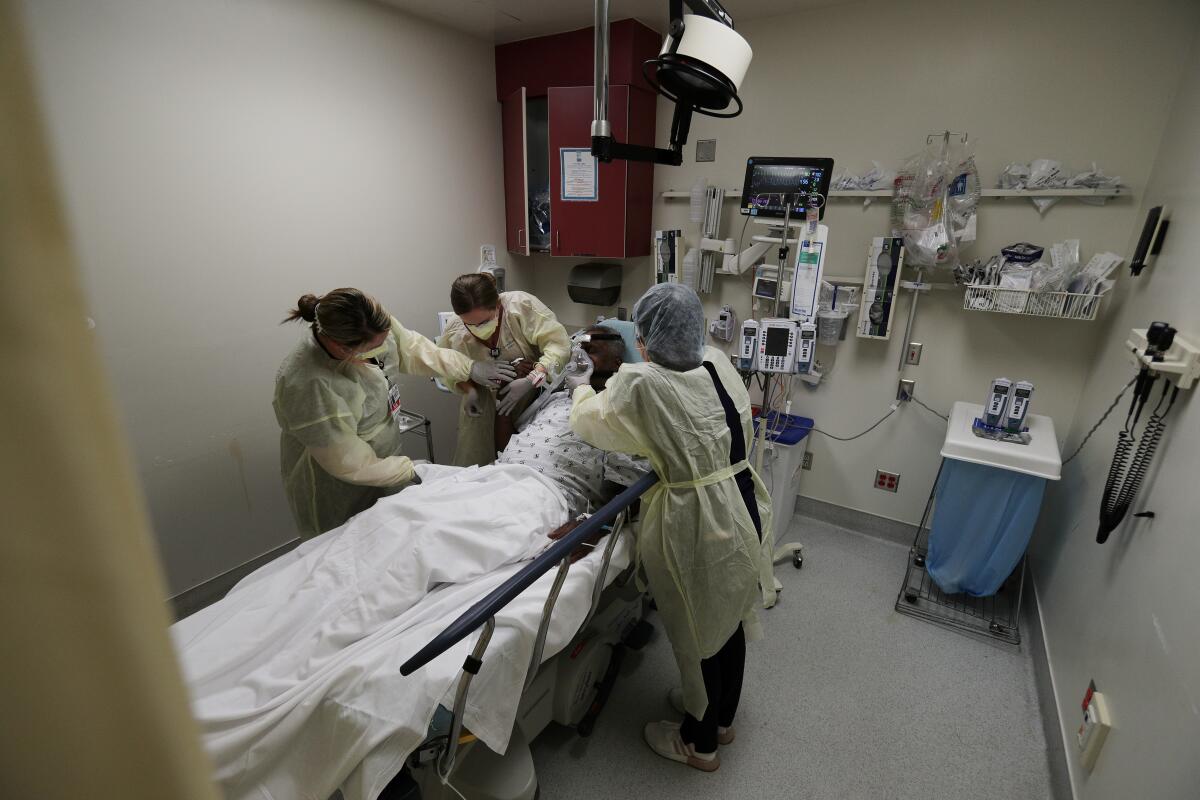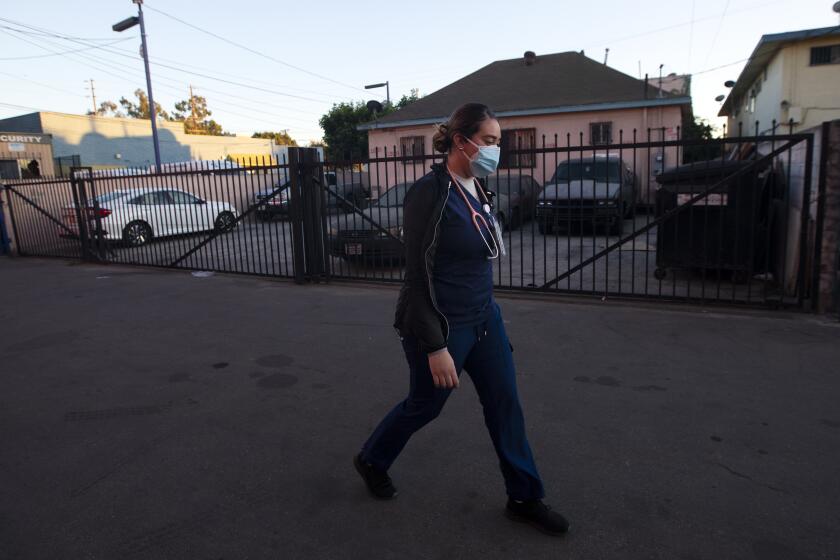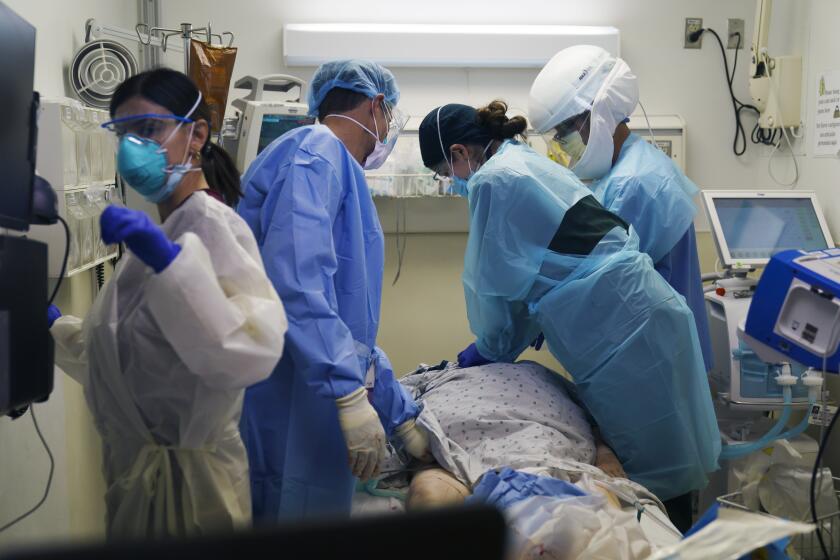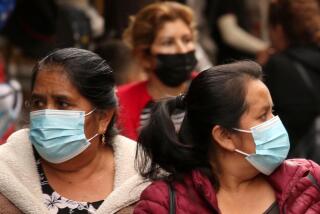Some ICUs at California hospitals are completely full: ‘It is the worst we have seen’

Some California counties on Tuesday saw intensive care units hit full capacity, and others were getting close to that level as COVID-19 cases continued to surge.
At least three counties in the San Joaquin Valley have reached 0% capacity in their hospitals’ intensive care units, making the state’s agricultural hub the first area in California to become maxed out.
In Santa Clara County, meanwhile, conditions are deteriorating rapidly. Officials said there are only 31 ICU beds remaining — less than 10% of the county’s capacity — and that a few hospitals have run out completely.
“It is the worst we have seen, and it’s continuing to worsen,” said Dr. Ahmad Kamal of Santa Clara County.
With a population of almost 1 million people, Fresno County faces a potentially dire situation, overshadowing its smaller neighbors Madera County, to the north, and Kings County, to the south.
California on Tuesday shattered single-day records of coronavirus cases and deaths with the state’s worst tallies by far of the entire pandemic.
“All the things that you’re hearing about how impacted our hospitals are, about how dire this situation with our ICUs is, it’s absolutely true,” said Dr. Rais Vohra, Fresno County Department of Public Health’s interim health officer. “That really is the reason that we want everyone to stay home as much as possible, at least for the next few weeks until we get this surge under control, as we try to work through the hospitalizations that are just coming in so quickly and try to provide the best care.”
Though Central California is the first area in the state to hit 0% ICU capacity, it will not be the last. The latest data show that the entire San Joaquin Valley’s ICU capacity is down to 5.6%, and the Southern California region is hovering around 10.1%.
ICU beds come with specially trained healthcare professionals and high-tech equipment that can mean the difference between life and death for very sick patients. They are especially critical for patients with severe cases of COVID-19, who may require ventilators and round-the-clock care.
Vohra emphasized that the 0% capacity is a “snapshot in time” — the number changes as patients shift to higher or lower levels of care.
“It just means that ICU patients ... may be overflowing into other areas of the hospital,” Vohra said. “There are no official open beds available in the ICUs.”
With ICU capacity depleted, patients with serious COVID-19 cases may take up open beds in the emergency department, said Fresno County emergency medical services director Dan Lynch. He said the county expects to activate an alternate care site for overflow patients at the Porterville Developmental Center on Monday. The facility, which can hold 123 people, would begin with 20 to 25 patients while waiting for ICU staffing to ramp up.
When asked about staffing shortages at hospitals in the San Joaquin Valley during a Tuesday press conference, Dr. Mark Ghaly, the California Health and Human Services secretary, said it has been getting more difficult to secure additional staffing when counties call for help.
“We’re fulfilling what we can. But it is getting harder. We know that staff is our main scarce resource,” Ghaly said. “Our requests, both across the state and the nation, are hard to fulfill because of what’s happening across America with COVID.”
Hospitals are bracing for another surge in COVID-19 cases. This time, they’re worried about whether they’ll have enough staff.
Nonetheless, with the extreme shortage of ICU beds in the San Joaquin Valley, the region is a priority for additional staffing requests, Ghaly said.
Like the rest of the country, Fresno County is waiting to see the full effect of Thanksgiving gatherings, which likely served to spread the virus.
“I don’t think we’ve seen the peak,” Vohra said. “I think the peak is yet to come, and I’m very concerned that our hospitals will not be able to meet the demands that will be placed on them.”
The ICU shortage was a devastating blow for the county, after almost 11 months battling the contagion. Miguel Arias, president of the Fresno City Council, said he and his colleagues have been working furiously to avoid reaching this point. They have fined businesses that violate health orders, distributed protective equipment and sanitizers and asked people to wear masks and maintain social distance.
“Even with all that, we have come to a point where, Monday, we officially reached that epicenter that we’ve all been trying to avoid,” Arias said in an interview Tuesday afternoon.
Photos look back at 2020’s wild ride in the Golden State.
More to Read
Sign up for Essential California
The most important California stories and recommendations in your inbox every morning.
You may occasionally receive promotional content from the Los Angeles Times.
















